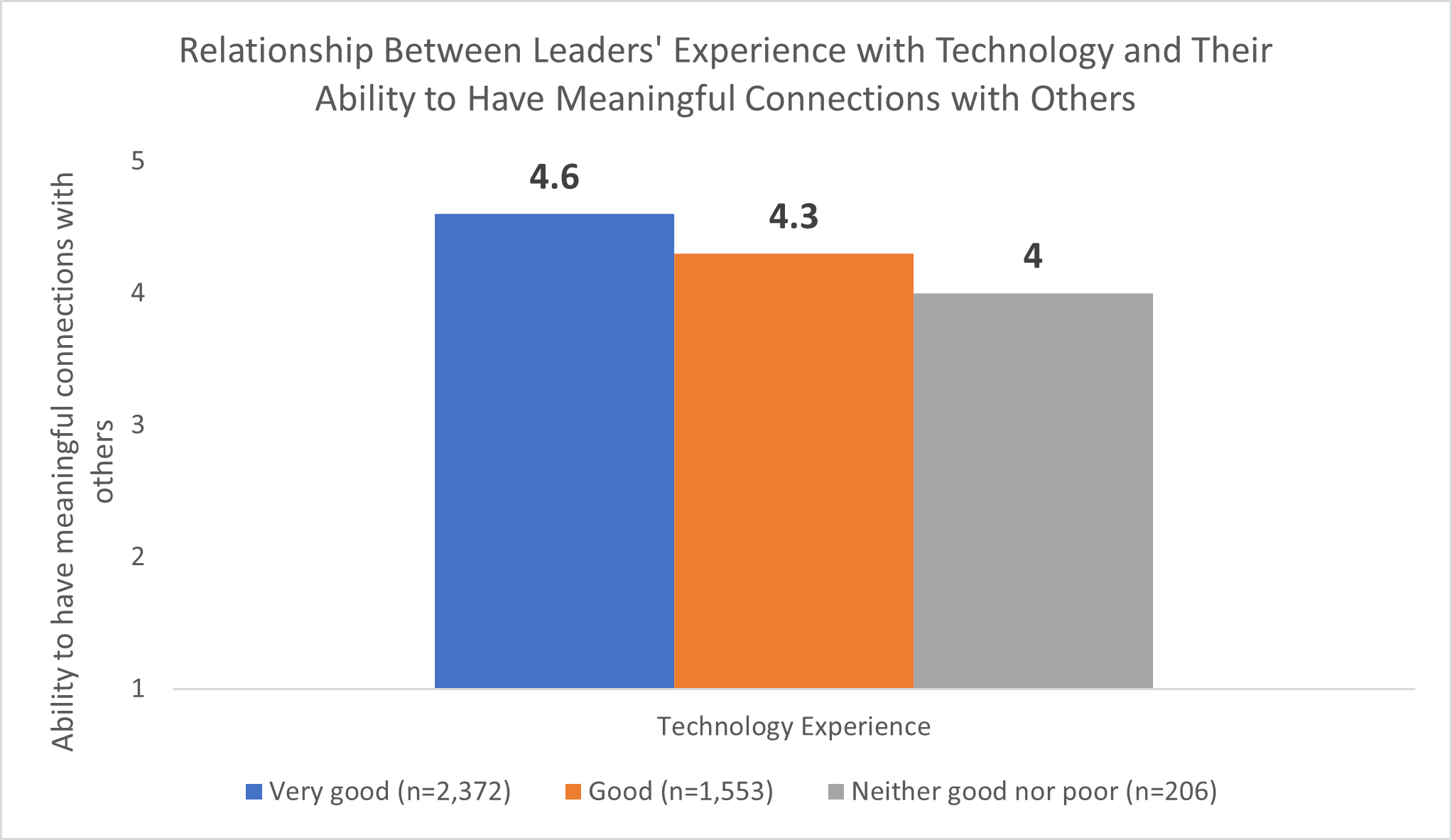People have a basic need to connect with others1, including in professional settings. Connection with others can mean a wide range of things-from friendly relationships that make work more pleasant to receiving social support, advice, or to meet needs for belonging. Leaders, of course, are no different. In fact, research has suggested that often leaders feel like they are “in it alone.” For example, one study2 found that few managers believe that any form of support is available to them from workplace relationships. The challenge may be even worse for leaders in more senior positions because there are fewer peers at their level and an expectation that they are to be the “providers” of the support rather than the recipients. In another study3, senior leaders reported loneliness or an unmet need to belong more so than leaders at lower levels.
Organizations do not typically invest in leadership development for the primary purpose of helping leaders experience meaningful connection; however, that is often an outcome we observe in our programs. There are multiple ways this outcome is achieved. One way is through developing better skills for building relationships such as listening, communication, empathy, and cultivating trust.
A more immediate way, though, is that leaders form connections very quickly with other leaders during the program experience. Leaders come together to reflect and learn with one another. Often there is an element of vulnerability, a space for them to admit, “I don’t have all the answers here,” and then get support from the other participants while they explore their opportunities to grow. This phenomenon of participants connecting to one another has been observed in classrooms around the world; but is it possible for this to happen in a virtual environment?
For the past year, we have been collecting some data that helps us start to answer questions about how leaders connect with others in virtual leadership development programs. Here are a few early insights:
1) Leaders do report having meaningful connections, even in virtual programs.
We are learning that leaders are able to make meaningful connections with others in the online sessions. We asked 5,906 leaders to rate the extent they were able to make meaningful connections with others in their online program; 92% of leaders indicated they “agree” or “strongly agree”, with an overall score of 4.5 on a five-point scale from Strongly Disagree (1) to Strongly Agree (5).
Their comments reveal that the interaction with other leaders is a highly valuable part of the program experience. They mention sharing perspectives, supporting one another, and opening up. As one leader put it:
“I love that I am becoming closer with my peers and opening up to peers I haven’t opened up to in the past. I’m hoping that this forms long-term connections and that I can lean on them in the future.”
2) A positive technology experience is related to having meaningful connections with other leaders in the program.
Leaders who indicated they had an overall positive experience with technology during the session tended to rate the item on “meaningful connections” higher than those who had a less positive experience. Less frustration or fewer technology-related distractions might allow leaders to focus more on the learning experience and to more fully engage with other leaders.
A similar datapoint is there is a relationship between connecting with others and how engaging the program experience is. Leaders who had taken a previous virtual training program were asked if their CCL program was more or less engaging (or about the same). The majority (64%) answered “more engaging” while only 4% rated it less engaging. Those who rated it as more engaging rated their connections with others 4.6 out of 5 while those who found it less engaging rated it 3.9 out of 5.

3) Length of program matters.
Sessions that were less than two hours received lower scores on the “meaningful connections” item (4.2, n=136) than those that were more than 2 hours (4.5, n=944). Longer sessions have the potential for conversations among participants that go more in depth, which may be a factor in the quality and impact of the interactions.
While these initial results are encouraging, we do not have a rating of how meaningful or valuable those interactions were, nor do we have a direct comparison to how the quality of interactions would have been in a face-to-face program.
In conclusion, connection matters; not only as a basic human need but also to help leaders maximize their own effectiveness and development. Relationships with other people (both positive and negative) are in fact one of the major sources of development for leaders. While it may not be the primary purpose of investing in leadership development, it is an outcome that contributes to both performance and well-being. In the midst of a pandemic that has limited our ability to be together physically, and required that most learning and development be done virtually, it is reassuring to know that leaders can still experience and benefit from meaningful connections with one another in on-line leadership development settings.
References
- Baumeister, R. F., & Leary, M. R. (1995). The need to belong: Desire for interpersonal attachments as a fundamental human motivation. Psychological Bulletin, 117(3), 497–529. https://doi.org/10.1037/0033-2909.117.3.497
- Lindorff, M. (2001). Are they lonely at the top? Social relationships and social support among Australian managers. Work and Stress, 15(3), 274-482. https://doi.org/10.1080/026783701110.1080/02678370110066599
- Zumaeta, J. (2018). Lonely at the Top: How do Senior Leaders Navigate the Need to Belong? Journal of Leadership & Organizational Studies, 26(1), 111-135. https://doi.org/10.1177/1548051818774548


